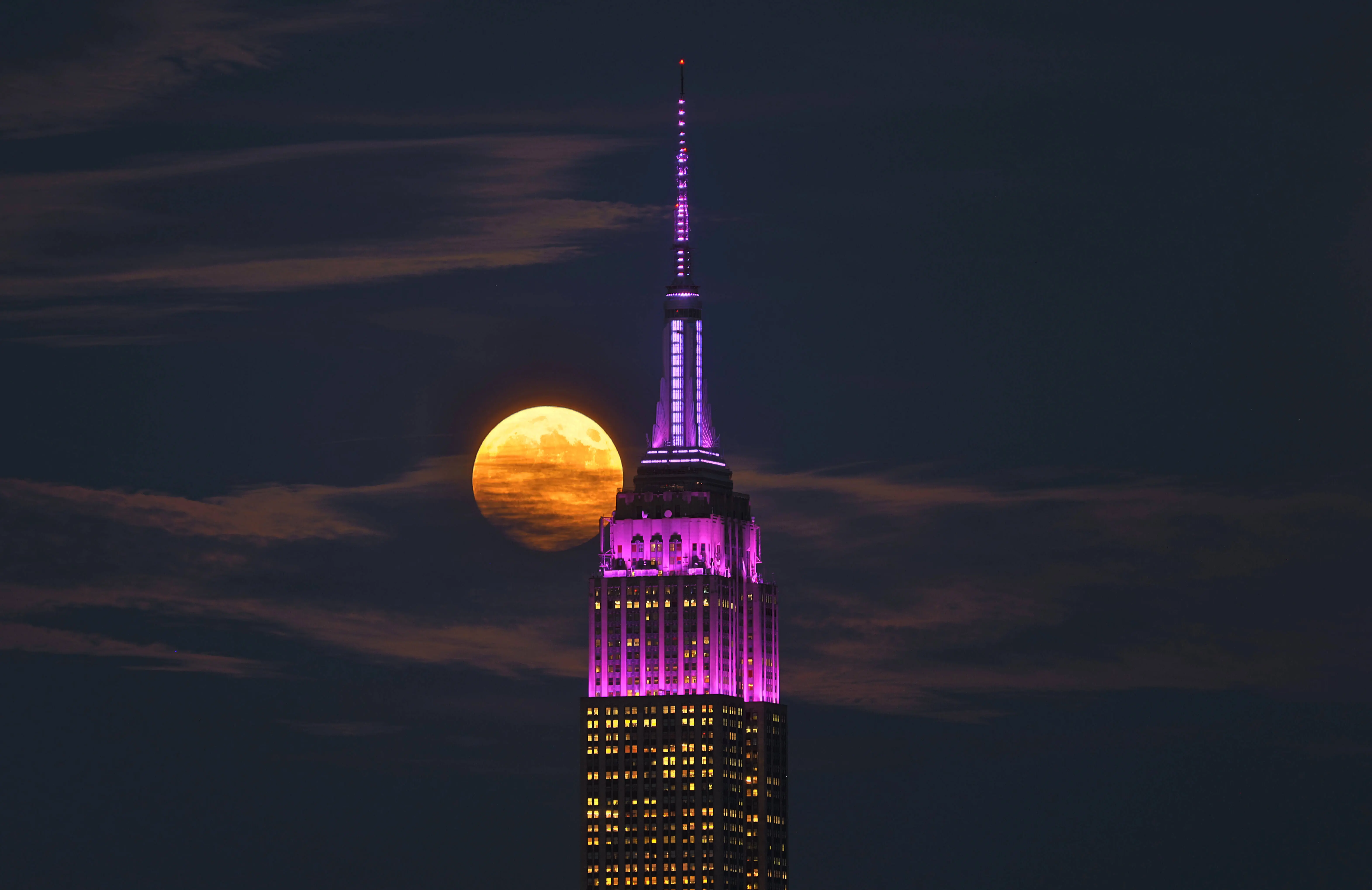The next supermoon is coming soon — here’s what it is and when to watch it
-
 UNION CITY, NJ - SEPTEMBER 17: The full Harvest Supermoon rises behind the Empire State Building in New York City on September 17, 2024, as seen from Union City, New Jersey. (Photo by Gary Hershorn/Getty Images)
UNION CITY, NJ - SEPTEMBER 17: The full Harvest Supermoon rises behind the Empire State Building in New York City on September 17, 2024, as seen from Union City, New Jersey. (Photo by Gary Hershorn/Getty Images)Skywatchers around the world will soon be treated to one of the brightest and most beautiful sights in the night sky - a supermoon. The term “supermoon” describes a full moon that appears larger and brighter than usual because it occurs when the Moon is closest to Earth in its orbit. This event is expected to light up the sky and draw the attention of stargazers everywhere.
What is a supermoon?
A supermoon happens when the Moon reaches its full phase, at the same time it is near perigee, or its closest point to Earth. The Moon travels around our planet in an elliptical orbit, meaning its distance from Earth changes slightly each month. When the full moon occurs during perigee, the Moon can appear up to 14% larger and about 30% brighter than when it is at its farthest point, known as apogee.
Even though the size difference is not always easy to notice without comparison photos, the brighter glow of a supermoon is often clear to the naked eye. The phenomenon is entirely natural and happens several times a year, depending on the Moon’s orbit.
Why does the Moon look bigger?
The supermoon effect is partly a matter of perspective. When the Moon is near the horizon, it can appear even larger because of what’s known as the “moon illusion.” This is a visual trick where the brain perceives the Moon as bigger when seen next to objects on the ground, such as trees or buildings.
In reality, the Moon’s size does not change, but its closeness to Earth during a supermoon makes it appear slightly larger and brighter to observers.
When to watch the next supermoon
According to astronomers, the next supermoon will occur in the coming weeks, offering a bright display for several nights in a row. The exact date depends on your location, but the best time to watch will be shortly after sunset or before sunrise when the Moon is low in the sky.
The weather will play an important role in visibility. Clear skies will make for the best viewing conditions, while cloudy nights may limit what you can see. The Moon will continue to look nearly full for a day or two before and after the actual event, giving skywatchers several chances to enjoy it.
The origin of the term “supermoon”
The name “supermoon” was first popularized in the late 1970s by astrologer Richard Nolle. However, the event itself has been studied by astronomers for centuries. While the term is not officially used in scientific classifications, it has become a popular way to describe the Moon’s perigee-syzygy alignment - when the Moon, Earth, and Sun line up in a particular way.
A treat for skygazers
Supermoons are okay to look at with the naked eye and do not need a special device. Having binoculars or a telescope, however, will make the sight more enjoyable, with details such as craters, ridges, and lunar highlands shining brightly. It is also possible to take pleasing photographs of the supermoon and more so when placed within background features like mountains or urban skylines.
The event is a reminder of the dynamic and lovely nature of the Moon's movements. Whether observed from a city balcony or in a peaceful countryside, the supermoon provides a straightforward yet dramatic link between space and Earth.
Astronomers say that there are usually two or four supermoons each year. Each one has a slightly different experience depending on its distance, timing, and location in the sky. Until then, skywatchers are invited to verify their local moonrise and moonset times and get ready to see one of nature's most dependable light displays.
TOPICS: Supermoon
- The final supermoon of 2025 arrives this December as the Cold Moon — what it means and when you can see it
- Don’t miss the Cold Moon on December 4 — the last Supermoon of 2025 follows the Beaver Moon’s glow
- The biggest Supermoon since 2019 will rise this November - date, time, and best places to watch
- The biggest Supermoon of the year arrives on November 5 — here’s when and how to watch it